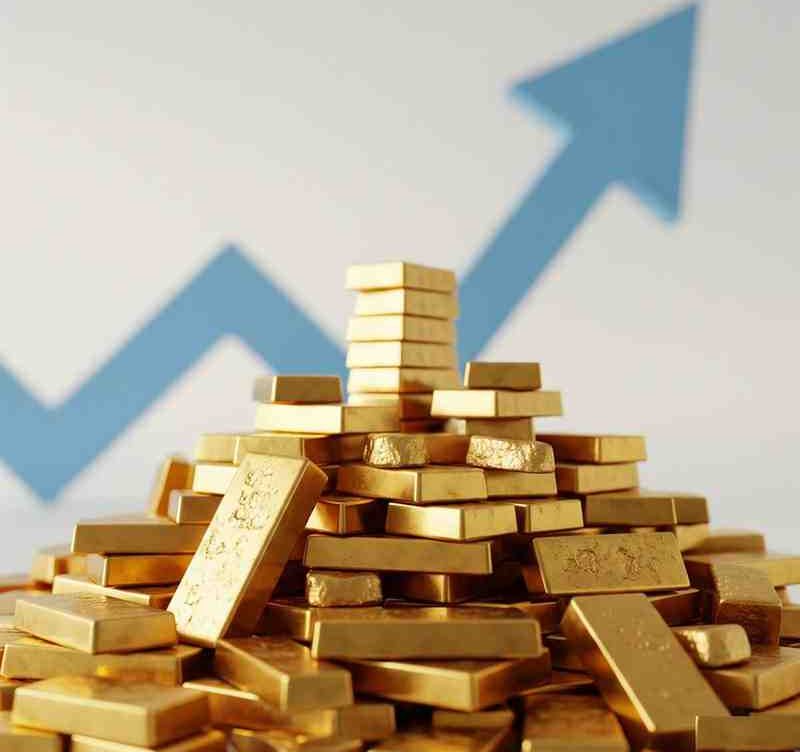
How Global Commodity Prices (LME) Impact Metal Stocks in India
How Global Commodity Prices (LME) Impact Metal Stocks in India
For investors tracking the pulse of the Indian equity markets, particularly those with exposure to the metals and mining sector, a keen understanding of global commodity price dynamics is paramount. The London Metal Exchange (LME), as the world’s premier non-ferrous metals market, serves as a crucial benchmark for prices of industrial metals like aluminum, copper, zinc, lead, nickel, and tin. Fluctuations in LME prices have a significant and often immediate impact on the financial health and stock valuations of Indian metal companies. This analysis delves into the mechanics of this relationship, exploring the factors driving the impact of LME prices on Indian metal stocks and providing insights for investors navigating this dynamic sector.
Thank you for reading this post, don't forget to subscribe!The London Metal Exchange: A Global Price Setter
The LME provides a transparent and regulated platform for the trading of futures and options contracts for base and other industrial metals. Its prices are determined by the forces of global supply and demand, reflecting macroeconomic trends, geopolitical events, inventory levels, and the outlook for key industrial sectors worldwide (such as construction, automotive, and manufacturing). As such, LME prices act as a leading indicator for the profitability of metal producers globally, including those in India.
Direct Transmission: How LME Prices Influence Indian Metal Companies
The most direct channel through which LME prices affect Indian metal stocks is through their impact on the revenue and profitability of metal producers.
- Export Revenue: A significant portion of the metals produced by Indian companies (e.g., Tata Steel, Hindalco Industries, Vedanta) is exported internationally. These exports are typically priced based on prevailing LME benchmarks, often with adjustments for premiums or discounts depending on the specific product grade, form, and regional demand. When LME prices rise, Indian metal exporters realize higher revenue per unit of sale, directly boosting their top line and potentially expanding their profit margins, assuming their production costs remain relatively stable. Conversely, a decline in LME prices can squeeze margins and reduce overall profitability.
- Domestic Pricing Dynamics: While a portion of Indian metal production caters to the domestic market, local prices are not entirely insulated from global trends. Large industrial consumers in India are aware of international price benchmarks. Significant movements in LME prices often create pressure for domestic prices to adjust accordingly, albeit with a lag and influenced by local demand-supply dynamics, import competition, and government policies. For instance, a sustained rise in global aluminum prices on the LME will likely lead to upward pressure on domestic aluminum prices, benefiting Indian aluminum producers even on their local sales.
The Role of the Rupee-Dollar Exchange Rate
It is crucial to consider the interplay between LME prices (typically quoted in US dollars) and the Indian Rupee (INR). For Indian metal companies, their export revenues in INR are affected by both the LME price and the INR/USD exchange rate. A weakening Rupee against the Dollar can amplify the positive impact of rising LME prices (as USD-denominated revenues translate into more INR), while it can also cushion the negative impact of falling LME prices to some extent. Conversely, a strengthening Rupee can moderate the benefits of rising LME prices and exacerbate the pain of falling prices. Investors analyzing the correlation between LME and Indian metal stocks must therefore also track currency movements.
Beyond Direct Pricing: Indirect Influences
The influence of LME prices extends beyond immediate revenue impacts:
- Inventory Valuation: Metal producers and traders hold significant inventories of raw materials and finished goods. Changes in LME prices directly affect the value of these inventories. Rising prices can lead to inventory gains, while falling prices can result in inventory losses, impacting the financial statements.
- Investor Sentiment and Valuation Multiples: The performance of metal stocks is often closely tied to investor sentiment regarding global economic growth and industrial demand, which are key drivers of LME prices. A rising LME environment typically fuels optimism about the profitability of metal companies, potentially leading to higher price-to-earnings (P/E) or other valuation multiples. Conversely, a bearish outlook for commodity prices can dampen investor enthusiasm and lead to multiple contraction. Therefore, global commodity prices and stock market India‘s metal sector often move in tandem.
- Cost of Imported Raw Materials: While Indian metal companies are primarily producers, some may rely on imported raw materials or components whose prices can also be linked to global commodity benchmarks. Fluctuations in these input costs can partially offset the benefits of higher LME prices or exacerbate the negative effects of lower prices.
Navigating the Dynamics: Insights for Investors
For investors looking at how to invest in metal stocks in India, understanding the relationship with LME prices is fundamental. Here are some key considerations:
- Track LME Prices Diligently: Monitoring the price trends of key metals relevant to a specific Indian company’s product portfolio (e.g., aluminum for Hindalco, steel for Tata Steel, copper for Hindustan Copper) is crucial. Numerous financial websites and platforms provide real-time and historical LME data.
- Analyze Company-Specific Factors: While LME prices provide a strong directional cue, company-specific factors such as production costs, operational efficiency, product mix, hedging strategies, and domestic market share also play a significant role in determining profitability. A low-cost producer might weather a downturn in LME prices better than a high-cost one.
- Consider the Broader Macroeconomic Context: Global economic growth forecasts, manufacturing activity data (e.g., Purchasing Managers’ Indices – PMIs), infrastructure spending plans in major economies, and geopolitical stability all influence commodity demand and, consequently, LME prices. A holistic view is essential.
- Evaluate Currency Risk: As mentioned earlier, the INR/USD exchange rate adds another layer of complexity. Investors should consider potential currency movements when assessing the impact of LME price changes on Indian metal companies’ earnings.
Metal Sector Outlook India: The Interplay Continues
Looking ahead to Metal sector outlook in India, the influence of global commodity prices will remain a critical factor. The trajectory of global economic recovery, particularly in key consuming nations like China, the US, and Europe, will significantly impact demand for industrial metals and, consequently, LME prices. Domestic factors in India, such as infrastructure development initiatives, manufacturing growth under “Make in India,” and government policies related to mining and exports, will also shape the fortunes of Indian metal companies. However, the global price signals from the LME will continue to provide a crucial backdrop against which to evaluate the potential performance of Indian metal stocks.
Conclusion
The relationship between global commodity prices on the LME and the performance of metal stocks in India is a complex but vital dynamic for investors to comprehend. LME prices act as a primary driver of revenue and profitability for Indian metal producers, influencing domestic pricing, inventory valuations, and investor sentiment. By diligently tracking LME trends, understanding the interplay with the Rupee-Dollar exchange rate, and considering company-specific fundamentals and the broader macroeconomic environment, investors can make more informed decisions in this cyclical yet fundamentally important sector of the Indian equity market.
Related Blogs:
How Government’s PLI Schemes Are Boosting Indian Metal Stocks
Best Steel Stocks in India in 2025
Top 5 Steel Stocks in India: A Guide for Investors in 2025
Best Steel Stocks in India
Diversifying Your Portfolio with India’s Steel Sector
Best Metal Stocks in India
Top 5 Metal Stocks in India
Best Aluminum Stocks in India
Disclaimer: This blog post is intended for informational purposes only and should not be considered financial advice. The financial data presented is subject to change over time, and the securities mentioned are examples only and do not constitute investment recommendations. Always conduct thorough research and consult with a qualified financial advisor before making any investment decisions.

